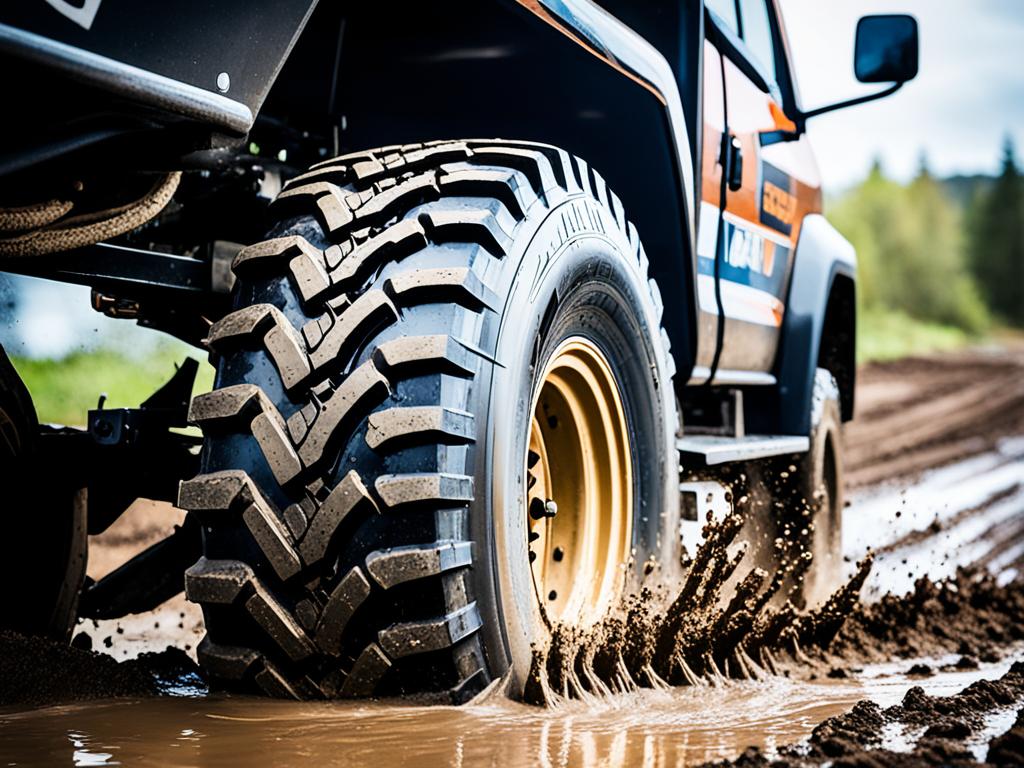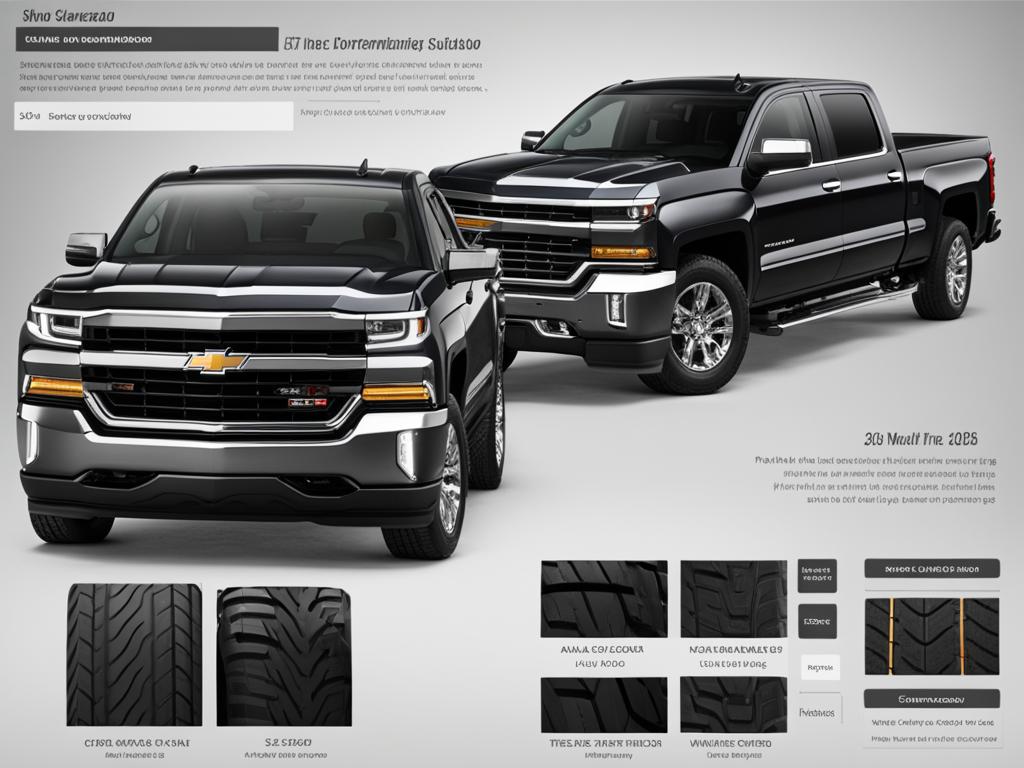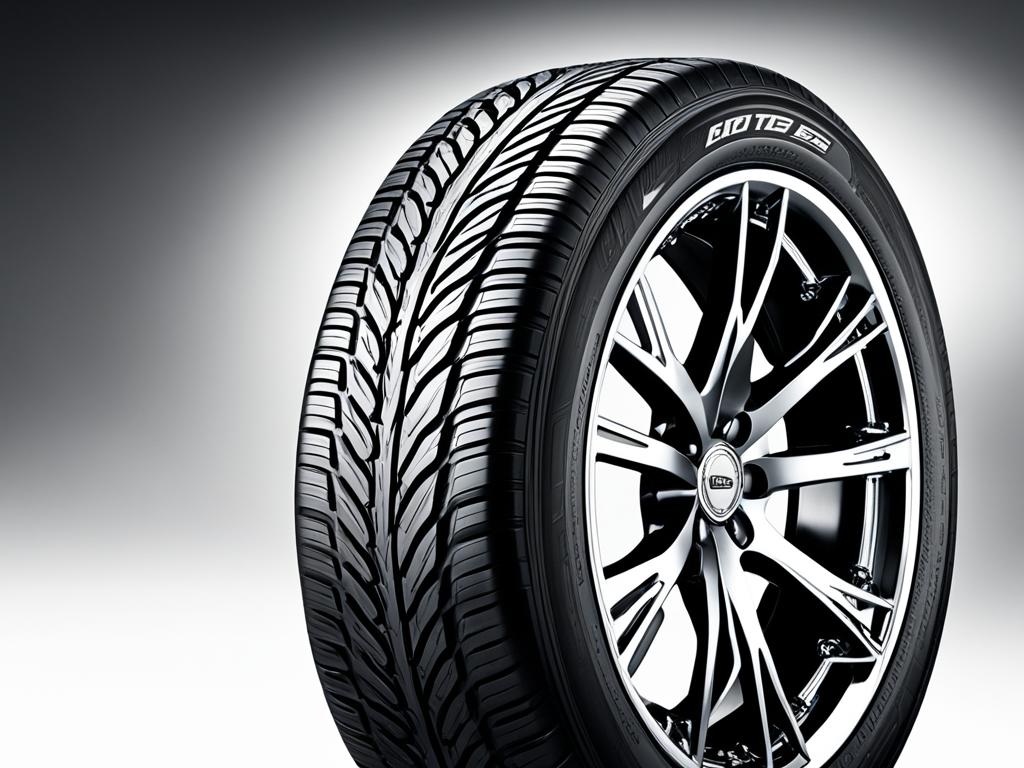Did you know that vehicles equipped with dual rear tires have the potential to reduce tire costs by up to 50%? This surprising fact highlights the significant impact and benefits of dual rear tires, proving that they are not merely an optional feature, but a valuable asset for vehicle performance and efficiency. In this article, we will delve into the purpose of dual rear tires, uncovering their function, advantages, and the invaluable role they play in fleet management and cost savings.
Understanding Dual Rear Tires and Their Function
Table of Contents
ToggleWhat Is The Purpose Of Dual Rear Tires
Dual rear tires serve specific functions and operate differently from single rear tires. In this section, we will explore the basics of dual rear tire functionality and discuss the essential roles of a dual tire configuration. We will also compare dual rear tires to single rear tires to highlight their advantages and benefits.
Basics of Dual Rear Tire Functionality
Dual rear tires distribute weight more evenly across the rear axle, resulting in improved traction and stability. By having two tires on each side, the vehicle can better handle heavy loads and navigate challenging road conditions. Additionally, dual rear tires provide enhanced cornering capabilities and reduce the risk of tire blowouts.
Essential Roles of a Dual Tire Configuration
A dual tire configuration increases the load capacity of a vehicle, making it ideal for applications that require carrying heavy loads. The additional tires share the load, reducing wear and tear on individual tires and enhancing overall durability. Furthermore, dual rear tires contribute to improved stability during towing and offer better braking performance.
Learn more How to check tire manufacturing date
Comparing Dual and Single Rear Tires
When comparing dual rear tires to single rear tires, several advantages become apparent. Dual rear tires provide better traction, especially in off-road or slippery conditions, minimizing the risk of slides and loss of control. They also offer increased stability, particularly when towing or carrying substantial loads. In terms of cost effectiveness, dual rear tires have longer lifespan due to reduced strain on individual tires, resulting in lower maintenance and replacement costs over time.

Enhanced Performance and Safety with Dual Rear Tires
Dual rear tires play a significant role in enhancing vehicle performance and safety. By implementing a dual tire configuration, drivers and fleet operators can experience improved handling, stability, and control, ultimately leading to better overall performance. With dual rear tires, your vehicle can navigate various road conditions with increased confidence and responsiveness.
One of the key benefits of dual rear tires is their contribution to improved vehicle safety. Dual rear tires offer enhanced braking ability, allowing for shorter stopping distances and better control during emergency situations. Additionally, the dual tire setup provides increased resistance to blowouts, reducing the risk of tire failure and potential accidents.
The advantages of dual rear tires go beyond performance and safety. By spreading the load across multiple tires, dual rear tires provide better weight distribution, resulting in reduced stress on individual tires, axles, and suspension components. This leads to improved tire longevity, reduced maintenance costs, and increased overall vehicle reliability.
Learn more about Tire tread depth chart

Furthermore, the benefits of dual rear tires extend to fleet operators who rely on optimized vehicle performance and safety. With enhanced handling and stability, fleet vehicles equipped with dual rear tires can navigate challenging road conditions and deliver goods or services more efficiently. Additionally, the improved safety features of dual rear tires can reduce the risk of accidents, minimizing downtime and ensuring smoother operations.
Optimizing Vehicle Performance with Dual Rear Tires
Dual rear tires play a crucial role in optimizing vehicle performance. They offer several key advantages that contribute to improved traction, load distribution, and overall vehicle stability.
Improved Traction: Dual Tires in Action
One of the notable benefits of dual rear tires is their ability to enhance traction, especially in challenging road conditions. The additional tire provides increased contact with the road surface, improving grip and reducing the risk of slippage. Whether it’s navigating wet or muddy terrain or maneuvering around sharp turns, dual rear tires offer improved traction, allowing for better control and increased safety.
Learn more about Tire size calculator

Load Distribution: A Key Advantage of Dual Tires
Dual rear tires also offer significant load distribution benefits. By spreading the weight across two tires instead of one, dual tire configurations allow for better weight management. This enables vehicles to carry heavier loads without placing excessive strain on individual tires. Additionally, the improved load distribution reduces the likelihood of tire blowouts and extends the lifespan of the tires. Fleet operators can maximize their carrying capacity while ensuring a safe and efficient transportation process.

Technology Advancements in Dual Tire Systems
Advancements in technology have further enhanced the performance and capabilities of dual tire systems. Tire pressure monitoring systems (TPMS) have become increasingly sophisticated, allowing drivers to monitor tire pressure and detect abnormalities in real time. Intelligent tire management systems provide valuable insights into tire performance and enable proactive maintenance. These technological advancements ensure optimal tire operation and minimize the risk of tire-related issues, contributing to improved vehicle performance and safety.
The Purpose of Dual Rear Tires
Dual rear tires serve a specific purpose for various applications. They are designed to enhance stability and towing capabilities, making them suitable for tasks that require additional support and control. Whether you’re hauling heavy loads or navigating challenging terrains, dual rear tires offer significant advantages that contribute to improved performance and safer operations.
Stability and Towing: Purpose-Driven Dual Tire Use
One of the key purposes of dual rear tires is to enhance stability, especially when towing heavy trailers or carrying substantial loads. With the additional set of tires, the weight is distributed more evenly, reducing the chance of swaying or fishtailing. This added stability not only improves handling but also enhances overall safety, providing drivers with a greater sense of control and reducing the risk of accidents.

“The purpose of dual rear tires is to provide stability and support when towing heavy loads, allowing drivers to maneuver with confidence.” – Expert in Tire Technology
Moreover, dual rear tires increase the towing capacity of vehicles. The extra set of tires helps distribute the weight more effectively, minimizing the strain on individual tires and providing better traction. This enables vehicles to handle heavier loads without compromising safety or performance, ensuring a smoother and more controlled towing experience.
Learn more about Best all season tire for Subaru outback
Handling Heavy Load: Why More Wheels Can Mean More Capability
When it comes to handling heavy loads, the purpose of dual rear tires becomes evident. The additional set of tires not only helps distribute the weight more evenly but also reduces the stress on individual tires. By carrying the load across more tires, the weight is better supported, resulting in improved durability and longevity of the tires.
Furthermore, the increased contact area with the road surface provides better traction, allowing the vehicle to maintain stability and control even under heavy load conditions. This not only enhances the vehicle’s performance but also reduces the risk of tire failures and blowouts, ensuring a safer and more reliable operation.
A Closer Look at Dual Rear Tires for Improved Traction
In addition to enhancing stability and handling heavy loads, dual rear tires offer improved traction, especially in challenging road conditions. The additional set of tires provides more surface area in contact with the road, increasing the friction and grip. This is particularly beneficial in off-road situations and slippery terrains, where maintaining traction is crucial for safe and confident driving.
The improved traction offered by dual rear tires allows vehicles to navigate through rough terrains, such as muddy or icy roads, with greater ease and control. The enhanced grip minimizes the risk of skidding or getting stuck, ensuring a smoother and more efficient operation.
Overall, dual rear tires serve a purpose-driven role in enhancing stability, towing capabilities, handling heavy loads, and improving traction. Their unique design and functionality contribute to improved performance, safety, and efficiency in various applications, making them a valuable asset for drivers and fleet operators.
The Impact of Dual Rear Tires on Fleet Management and Cost Savings
Dual rear tires have a significant impact on fleet management and cost savings. By implementing a dual tire configuration, fleet operators can reap numerous benefits that contribute to increased operational efficiency and reduced expenses. One of the key advantages of dual rear tires is improved vehicle reliability, leading to reduced downtime. This means that fleet vehicles equipped with dual rear tires are less likely to experience tire-related issues, such as blowouts or flats, resulting in fewer instances of vehicle breakdowns and maintenance disruptions.
Moreover, dual rear tires offer cost-saving benefits, particularly in terms of maintenance and replacement costs. The enhanced durability and load-carrying capacity of dual rear tires mean that they can withstand heavier loads over extended periods, reducing the need for frequent tire replacements. Additionally, the improved weight distribution provided by dual rear tires helps to minimize the wear and tear on individual tires, prolonging their lifespan and further reducing maintenance expenses.

Furthermore, the enhanced stability and traction offered by dual rear tires contribute to fuel efficiency, resulting in additional cost savings for fleet operators. The increased stability provided by the dual tire configuration ensures better handling and control, reducing the likelihood of accidents or damage to goods during transportation. Additionally, the improved traction of dual rear tires enables vehicles to navigate challenging road conditions more effectively, reducing fuel consumption by minimizing wheel slippage and maximizing traction.
In summary, the impact of dual rear tires on fleet management and cost savings cannot be underestimated. The improved vehicle reliability, reduced maintenance and replacement costs, and enhanced fuel efficiency make dual rear tires a valuable investment for fleet operators. By understanding and harnessing the benefits of dual rear tires, fleet operators can optimize their operations, increase their profitability, and ensure a smoother and more cost-effective transportation process.
Conclusion
Summarizing the Dual Rear Tire Advantages and Considerations
In conclusion, dual rear tires offer numerous advantages and benefits for vehicles and fleet operations. Throughout this article, we have explored the different aspects of dual rear tires and how they contribute to enhanced performance, safety, and efficiency.
Firstly, dual rear tires improve vehicle performance by providing better traction and stability. With the ability to distribute weight more effectively and handle heavy loads, dual rear tires optimize vehicle handling in various road conditions.
Secondly, dual rear tires enhance safety by improving overall vehicle control and reducing the risk of blowouts. With increased braking ability and resistance to tire failures, dual rear tires offer a higher level of safety for drivers and fleet operators.
However, it is important to consider certain factors when choosing dual rear tires. The pros of dual rear tires include improved performance and safety, while the cons may involve higher initial costs and additional maintenance requirements.
To decide whether dual rear tires are suitable for your vehicle and specific needs, it is essential to carefully weigh the advantages and considerations. By evaluating the pros and cons, you can make an informed decision that aligns with your requirements and preferences.
FAQ
What is the purpose of dual rear tires?
The purpose of dual rear tires is to enhance vehicle performance, stability, and safety by distributing weight, improving traction, and increasing load capacity.
How do dual rear tires function?
Dual rear tires operate by sharing the load, reducing stress on individual tires, and distributing weight more effectively, resulting in improved vehicle stability and handling.
What are the essential roles of a dual tire configuration?
A dual tire configuration increases load capacity, enhances stability, and improves overall vehicle performance by providing additional support and control.
How do dual rear tires compare to single rear tires?
Dual rear tires offer advantages such as improved traction, better load distribution, increased carrying capacity, and enhanced stability compared to single rear tires.
How do dual rear tires contribute to enhanced performance and safety?
Dual rear tires improve vehicle handling, control, and stability, leading to enhanced performance. They also provide better braking ability and increased resistance to blowouts for improved safety.
How do dual rear tires optimize vehicle performance?
Dual rear tires enhance traction, especially in challenging road conditions, and distribute weight more effectively, resulting in better overall vehicle stability and improved carrying capacity.
What is the purpose of dual rear tires in stability and towing?
Dual rear tires enhance stability and towing capabilities by providing additional support and control, making them suitable for tasks that require towing or carrying heavy loads.
How do dual rear tires handle heavy loads?
Dual rear tires distribute weight more effectively, reducing stress on individual tires and improving overall load-bearing capacity, making them suitable for handling heavy loads.
How do dual rear tires improve traction?
Dual rear tires provide improved traction, particularly in off-road and slippery conditions, resulting in enhanced vehicle performance and safety.
What is the impact of dual rear tires on fleet management and cost savings?
Dual rear tires improve vehicle reliability, reduce downtime, and result in increased operational efficiency, leading to cost savings in maintenance, replacement, and overall fleet management.



